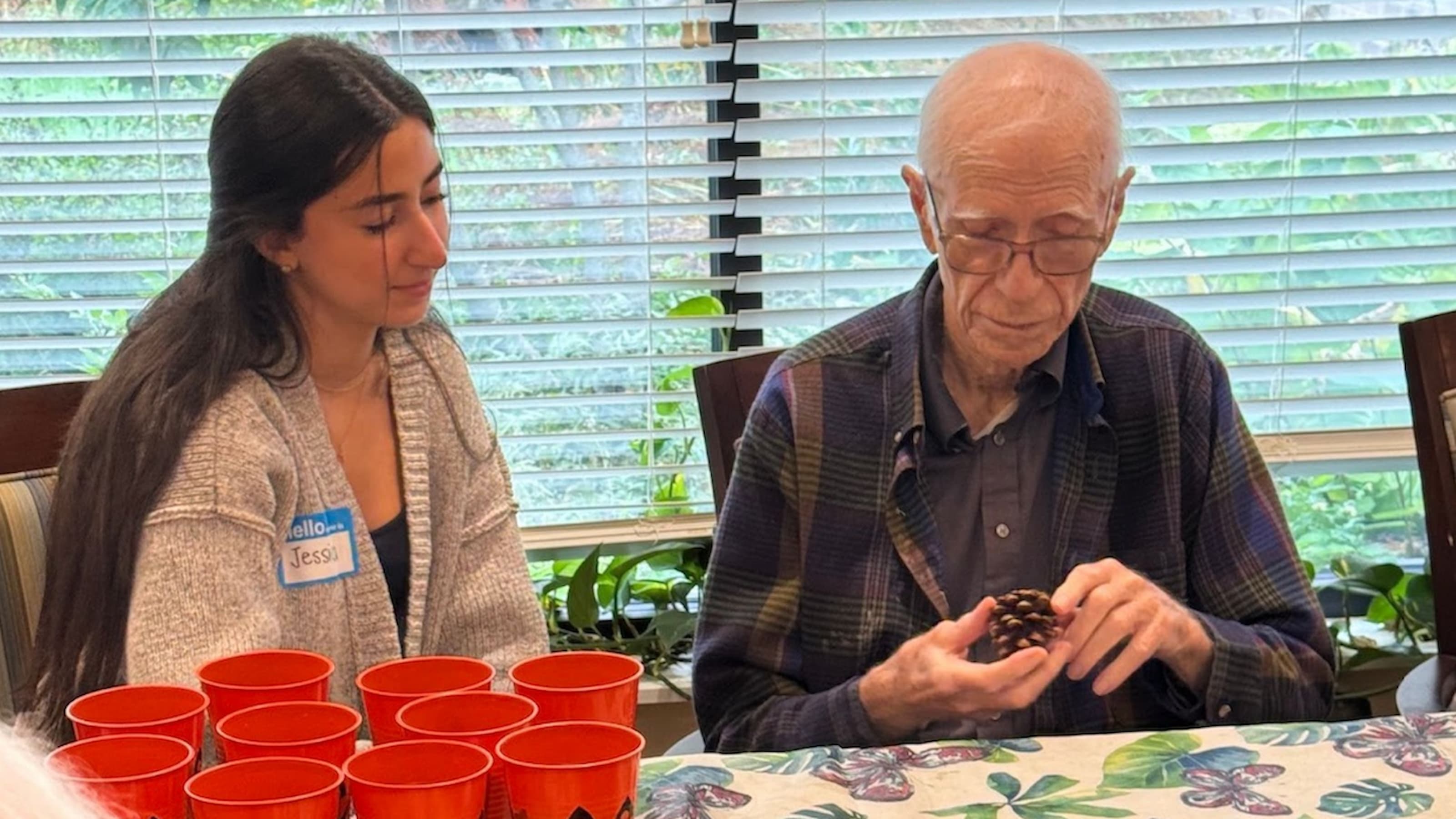A Creative Recipe for Hands-on Learning During Physical Distancing
Theresa Crossan, adjunct professor of chemistry, moved her food chemistry lab online by inviting students into her home kitchen.
 Students enrolled in the food chemistry course have learned creative recipes while practicing physical-distancing.
Students enrolled in the food chemistry course have learned creative recipes while practicing physical-distancing.
What do you get when you combine flour, eggs, a teenage assistant and a camera? A creative recipe for teaching a hands-on class in the midst of physical distancing.
Saint Joseph’s University food marketing majors are offered a course in food chemistry to teach them about the nutritional and chemical composites that make up popular dishes. The goal of the course, taught by Theresa Crossan, M.A., an adjunct chemistry instructor, is to inspire students to think more deeply and creatively about how to sell food.
Crossan typically delivers the course in a hybrid format that includes a lecture and lab on campus. When the University moved to a virtual format after spring break, Crossan saw it as an opportunity to provide a creative take on the lessons.
“I decided I would do everything I have been doing from my kitchen,” Crossan says.
With her 15-year-old daughter acting as her assistant, Crossan records and uploads her Crossan Kitchen Chemistry videos twice a week to Zoom. Through lectures and experiments, she has taught the class how to make homemade hand sanitizer, how foods become fermented, the effects of acids on vegetables, the best way to store produce and a baking lab featuring the best and worst baking tips and mistakes.
After watching the videos for the week, students recreate the experiments or dishes in their homes and then submit a written paper based on the assignment. For example, a recent lecture focused on the 16 different types of oils, which are best for cooking and baking, and the proper heating temperature for each one.
After creating olive oil dips, students were asked to apply what they learned by imagining they were the CEO of an extra virgin olive oil company and to describe how they would market their product.
“The students were really engaged with this topic and some of the responses I got were creative and hilarious,” says Crossan. “One student wanted to name their company Sex and the Ziti.”
Students have also submitted their own ideas that Crossan incorporates into her lessons.
“I’ve had several requests to incorporate vegetarian ideas into my coursework,” says Crossan.
Although her videos are pre-recorded, they are not without bloopers, and she doesn’t edit them out. One experiment that wasn’t without a hitch was homemade pasta.
“Pasta starts with flour and two eggs. After preparing the flour, you create a well or dam in the middle, add the eggs and fold the flour around the eggs,” says Crossan. “As I’m speaking, my daughter begins to scream ‘The dam is broken!’ I look up to see eggs and flour running all over my counter and floor.”
After pausing the video to clean up the mess, she resumed her lecture and completed the experiment.
While Crossan can’t guarantee that the students leaving her class are gourmet chefs, she notes that students are more willing to try different recipes and combinations.
“This particular class applies chemistry in a way that they can understand and relate to. My students have been excited, engaged and forthcoming with foods and experiments they want to try,” says Crossan.
For Patrice Gantert ‘21, the food chemistry class gave her better understanding on nutrition and global food trends.
“This course has allowed me to view food outside of my traditional marketing lens and appreciate the nourishment that food provides to our bodies,” says Gantert. “I also learned some very useful cooking skills from Mrs. Crossan’s labs, for example, how to make pasta and homemade ice cream, that I will definitely be incorporating into my quarantine lifestyle.”



